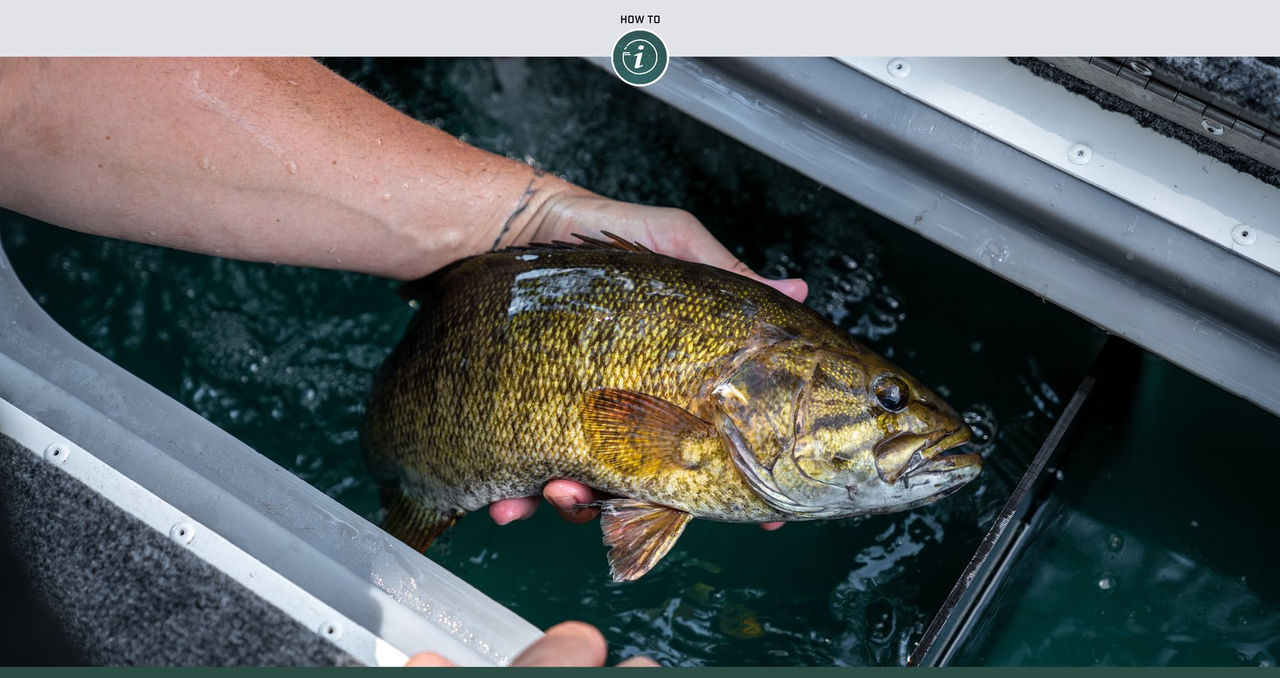Catch and release is one of the best aspects of bass fishing. The entire culture is built around this principle, with recreational and tournament anglers alike tossing back most of the bass they catch.
For the concept to work, it goes without saying that the fish must live. We owe it to the resource to ensure that the fish we handle, photograph and weigh in fight again to thrill another angler in the days ahead.
The first step in this principle is learning how to care for bass being held in a livewell. It’s not as easy as just filling the tank with water and dumping in keepers. Let’s dive in, so to speak.
Your livewell fills with lake water – the same water harboring your bass – but from the perspective of the fish, the similarity ends there. The instant fish are held in captivity, both their biological makeup and the water itself change.
When held in a livewell, bass secrete an extraordinary amount of waste product into the water, mainly in the form of ammonia and carbon dioxide. This is due to a combination of respiration (breathing) and stress. As this waste enters the water in the livewell, the water begins to change, slowly becoming toxic to the fish held within.
For that reason, the greatest single step you can take to ensure healthy fish onboard is to circulate your livewell with fresh water. Not “recirculate,” as in cycling the same water. In this case, pump new water into the system, allowing excess to drain through the overflow.
Timer systems on livewells are convenient, but in warm water, pumps should run full time once a few fish hit the livewell. It’s the only way to effectively flush out the waste product created by the bass.
Running livewell pumps pulls a bit of charge off the battery, so plan accordingly, and be sure to start your Mercury outboard throughout the day to maintain power levels.
Oxygen needs also increase for fish in captivity. A step to help is to install an aquarium-type bubble pump. Familiar to live-bait anglers, bubble pumps can greatly improve livewell conditions for bass.
These drop-in units are easy to install, can be quickly connected to a trolling motor battery with alligator clips and draw next to nothing in terms of power. It’s important to note that unless the factory livewell pump has a tube that pulls in fresh air, it adds only a small amount of oxygen to the water when compared to a bubbler, which actually “injects” the air. Other alternatives include installing an oxygen-generating device to supplement the onboard aeration system, and livewell vent lids that help waste gases escape the livewell compartment.
Ice is a big ally in keeping fish alive, especially in summer. Cooling the water greatly increases its ability to hold oxygen. A 10-degree drop in the temperature of your livewell water can increase oxygen-carrying capacity by 50%. However, biologists recommend dropping the livewell temperature no more than 10 degrees so that when fish are returned to the warmer waters of the lake, they do not experience “temperature shock.” When adding ice, it’s best to close off the livewell system to outside water flow to reduce how fast the ice melts. A small floating thermometer can help with managing temperature.
Follow these guidelines:
- Fill the livewell early in the morning when water temperatures are lowest. As soon as you catch your first fish, keep the pumps continuously running (with new water) through your morning of fishing.
- Around lunchtime, now with a nice catch aboard, close off the livewell to outside inflow, and simply recirculate the water within. Add a bubble pump (or other oxygen-generating system), if possible, as well as about 5 to 10 pounds of ice. In this example, we’re prepping a 25-gallon system. Experiment with your livewell to determine the amount of ice needed to reach the target temperature.
- Maintain this cooler, oxygenated water for two hours, max. Then, flush out at least half the water in the livewell with fresh water from the lake, as in the beginning of the day, then close off the system, add additional ice to drop the temperature back down 5 to 7 degrees and repeat.
Here’s where it’s possible to make a mistake. Many people understand the need to cool and recirculate the livewell, but they forget about the wastewater principle and the need to flush the water out after a few hours.
One final topic is that of chemical additives designed to improve livewell conditions. These have been around for decades.
Chemical additives do help, especially those created with tranquillizing agents to help calm fish. Shy away from any designed to increase activity in fish. That’s the opposite of what’s desired for fish in the livewell.
A trick used by fisheries agents and biologists is to simply add non-iodized salt, like that intended for water softeners. In fact, most of the material in commercial livewell additives is simple salt, as it buffers pH, neutralizes ammonia and increases oxygen load in water. A general rule is to add a soda can-sized container of salt for a large bass boat livewell.
To ensure the health of our resource, we must do everything we can to keep fish healthy through the entire catch-and-release process, especially if that release is delayed. Get on board today by creating a better environment for the fish on your boat.




